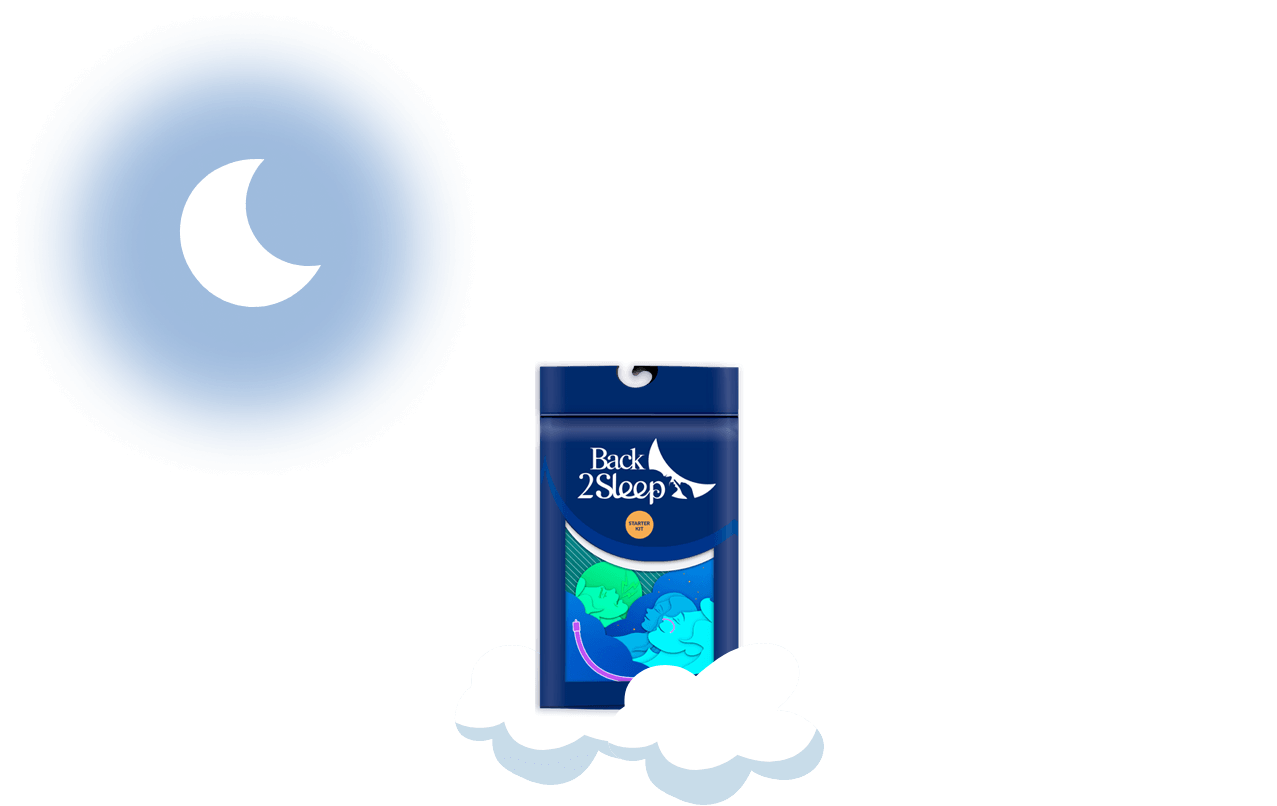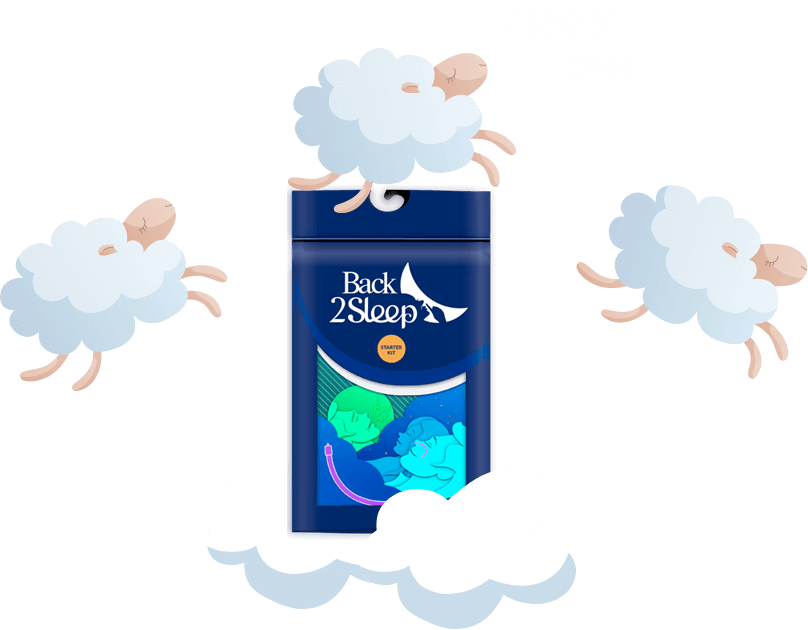Epworth Questionnaire for Sleep Apnea: Complete Definition, Scoring & Interpretation Guide
Understand how this validated 2-minute self-assessment helps identify daytime sleepiness and potential sleep disorders, with expert interpretation of your results
Are you constantly fighting daytime drowsiness despite sleeping through the night? The Epworth Sleepiness Scale (ESS) is a clinically validated self-assessment tool that helps identify excessive daytime sleepiness—a hallmark symptom of obstructive sleep apnea and other sleep disorders. Developed in 1990 by Dr. Murray Johns at Melbourne's Epworth Hospital, this simple 8-question questionnaire takes just 2-3 minutes to complete yet provides crucial insights into your sleep health. Whether you're constantly dozing during meetings, struggling to stay awake while driving, or simply wondering if your fatigue is normal, understanding your Epworth score offers the first step toward diagnosis and effective treatment of potentially serious sleep conditions.

Important Note: The Epworth Sleepiness Scale is a screening tool, not a diagnostic test. A high score indicates you should consult a healthcare provider for comprehensive sleep evaluation, which may include polysomnography or other diagnostic procedures.
Sleep Disorders by the Numbers: Why Assessment Matters
Research demonstrates that between 10-40% of the general population experiences excessive daytime sleepiness (EDS), with prevalence varying significantly across different demographic groups. The Epworth scale has proven remarkably reliable, with test-retest correlation coefficients ranging from 0.81 to 0.93 across multiple studies, confirming its consistency as a measurement tool.
What Is the Epworth Sleepiness Scale? Definition and Purpose
The Epworth Sleepiness Scale represents a groundbreaking advancement in sleep medicine assessment. Dr. Murray Johns developed this self-administered questionnaire at the Epworth Sleep Centre (which he established in 1988 at Epworth Hospital in Melbourne, Australia) specifically to quantify what he termed "average sleep propensity" (ASP)—essentially, your general tendency to fall asleep during everyday activities.
The Science Behind the Scale
Unlike other sleepiness measures that assess momentary drowsiness or actual sleep duration during the day, the ESS evaluates your likelihood of dozing off across eight different scenarios that vary in their "somnificity"—a term Dr. Johns coined to describe how different activities and postures influence sleep readiness. This approach provides a more comprehensive picture of your daytime sleepiness patterns.
📋 Self-Administered
Complete the questionnaire independently, rating your usual behavior across eight common daytime situations.
⏱️ Quick Assessment
Takes only 2-3 minutes to answer all questions, making it practical for clinical and research settings.
🎯 Objective Scoring
Uses a standardized 0-3 scale for each question, producing scores from 0-24 for clear interpretation.
🔬 Clinically Validated
Extensively studied since 1991, with proven reliability across diverse populations and sleep disorders.

Connection to Sleep Apnea
Obstructive sleep apnea (OSA) causes repeated breathing interruptions throughout the night, preventing restorative sleep and leading to severe daytime drowsiness. The Epworth scale has proven particularly effective at identifying OSA patients, with research showing ESS scores increase progressively with OSA severity. Multiple studies demonstrate that ESS scores successfully distinguish between primary snoring (benign) and true obstructive sleep apnea syndrome, making it a valuable screening instrument.
Clinical Insight: Research indicates ESS scores correlate more strongly with apnea frequency than with oxygen desaturation levels, suggesting daytime sleepiness relates more to sleep fragmentation than hypoxemia severity.
The 8 Epworth Questions: What the Scale Asks
The questionnaire evaluates your likelihood of dozing off or falling asleep in eight specific situations. For each scenario, you rate your chances on a simple 0-3 scale:
Rating Scale:
- 0 = Would never doze off
- 1 = Slight chance of dozing off
- 2 = Moderate chance of dozing off
- 3 = High chance of dozing off
Rate Your Likelihood of Dozing in These Situations:
1. Sitting and Reading
How likely are you to doze off while sitting quietly and reading a book, newspaper, or document?
2. Watching Television
What's your chance of falling asleep while watching TV or a movie?
3. Sitting Inactive in a Public Place
How likely are you to doze during inactive situations in public, such as in a meeting, theater, or dinner event?
4. As a Passenger in a Car
What's your chance of falling asleep as a passenger in a car traveling for one hour without stopping?
5. Lying Down to Rest
How likely are you to fall asleep when lying down to rest in the afternoon when circumstances permit?
6. Sitting and Talking
What's your chance of dozing while sitting and talking to someone?
7. Sitting Quietly After Lunch
How likely are you to fall asleep sitting quietly after a lunch without alcohol?
8. In a Car Stopped in Traffic
What's your chance of falling asleep while driving a car that is stopped for a few minutes in traffic?
To Calculate Your Score: Add up all eight numbers. Your total Epworth score will range from 0 to 24.
Important Instruction from Dr. Johns (1997 revision): "It is important that you answer each question as best you can." Even if you haven't done some activities recently, estimate how they would affect you. This instruction significantly improved completion rates—nearly everyone now answers all questions.
Epworth Score Interpretation: What Your Results Mean
Once you've calculated your total ESS score (the sum of all eight responses), understanding what that number indicates is crucial. However, interpretation must consider both statistical norms and clinical context.
| ESS Score Range | Interpretation | Recommended Action | Clinical Significance |
|---|---|---|---|
| 0-7 | Normal/Lower than average | No action typically needed | Unlikely abnormal sleepiness |
| 8-9 | Average daytime sleepiness | Monitor if symptoms worsen | Within normal population range |
| 10 | Borderline/Mild EDS | Consider medical evaluation | Above normal range threshold |
| 11-15 | Moderate excessive sleepiness | Seek medical consultation | May indicate sleep disorder |
| 16-24 | Severe excessive sleepiness | Urgent medical evaluation needed | Strong indication of sleep pathology |
Understanding "Normal" Scores
Dr. Johns initially reported (1991) that the "normal" ESS range was 2-10. However, subsequent research with larger populations revealed this was incorrect. Adults with no evidence of chronic sleep disorders (including frequent snoring) have a mean ESS score of 4.6, with a standard deviation of 2.8 and scores ranging from 0-10. This data comes from comprehensive Australian population studies published by Johns and Hocking in 2004.
Excessive Daytime Sleepiness (EDS)
Scores of 11-24 represent increasing levels of excessive daytime sleepiness. The percentage of people with EDS varies dramatically between groups—from about 10% in the general population to 40% or more in certain clinical populations. Notably, almost all patients with narcolepsy exhibit severe or moderate EDS by these criteria, exactly as expected given the nature of that condition.

Critical Safety Warning: If your Epworth score is high (10 or above), avoid driving vehicles and operating dangerous machinery until you've consulted with a physician and received clearance. Excessive daytime sleepiness significantly increases accident risk.
Age-Adjusted Considerations
While the standard ESS works for adults, interpretations may need adjustment for different age groups. Adolescents and elderly individuals may have different baseline sleepiness patterns. A modified version (ESS-CHAD) exists specifically for children and adolescents, with age-appropriate language and scenarios.
Read More Sleep Health ArticlesClinical Validity: How Reliable Is the Epworth Scale?
Since its introduction in 1991, the Epworth Sleepiness Scale has undergone extensive validation through numerous research studies worldwide. Understanding its psychometric properties helps appreciate both its strengths and limitations as a clinical tool.
Internal Consistency
The internal consistency of the ESS—measured by Cronbach's alpha—has been tested across ten separate investigations, yielding values between 0.73 and 0.90, with a mean of 0.82. This demonstrates excellent internal reliability, meaning the eight questions consistently measure the same underlying construct (daytime sleepiness).
Test-Retest Reliability
Five separate studies examined whether people give similar ESS scores when retested after several weeks to months. The intraclass correlation coefficient ranged from 0.81 to 0.93, indicating excellent stability—your score today should be similar to your score next month if nothing changes about your sleep patterns.
✅ Proven Strengths
Excellent reliability, quick administration, validated across diverse populations, sensitive to treatment effects, widely adopted in clinical practice.
⚠️ Important Limitations
Subjective self-report, cannot diagnose specific disorders, weak correlation with AHI severity, may underestimate actual sleepiness.
🔍 OSA Correlation
ESS scores significantly distinguish primary snoring from OSA and increase with OSA severity, though the relationship is not perfectly linear.
📊 Treatment Response
ESS effectively measures treatment efficacy, showing substantial reductions after CPAP therapy (Standard Response Mean >0.8).
The Subjectivity Challenge
A fascinating 2012 Portuguese study revealed that patients often underestimate their sleepiness before treatment. When 66 OSA patients completed the ESS before starting APAP therapy and again retrospectively after experiencing improved sleep, their mean baseline score jumped from 11.8 to 15.4—a statistically significant increase of 3.55 points. This suggests many people don't realize how sleepy they actually are until they experience what normal alertness feels like.
Research Finding: A 2013 study demonstrated that physician-administered ESS scores were more accurate than self-administered versions in predicting sleep apnea, suggesting professional guidance may improve the scale's diagnostic utility.
Minimum Clinically Important Difference (MCID)
Recent research has established that an ESS change of -2 to -3 points represents the minimum clinically important difference—the smallest change patients perceive as beneficial. This information is crucial for determining whether treatment has produced meaningful improvement, not just statistical change.
What the Epworth Scale Cannot Tell You: Critical Limitations
While the ESS provides valuable screening information, understanding what it cannot do is equally important for appropriate interpretation and clinical decision-making.
Why Comprehensive Sleep Studies Remain Essential
The gold standard for diagnosing sleep disorders remains polysomnography (overnight sleep study) or home sleep apnea testing. These objective tests measure actual breathing events, oxygen levels, sleep stages, and other physiological parameters that the ESS cannot assess. The Epworth scale serves as an excellent screening tool and treatment monitor but must be combined with objective testing for definitive diagnosis.
Clinical Recommendation: Never use ESS scores alone to make treatment decisions. Always combine them with comprehensive clinical evaluation, medical history, and when indicated, objective sleep testing like polygraphy or polysomnography.
When Should You Seek Medical Evaluation?
An Epworth score provides crucial information about whether professional medical evaluation is warranted. Beyond the numerical score, certain symptoms and circumstances demand immediate attention.
Immediate Medical Consultation Recommended If:
What Happens During Sleep Evaluation?
When you consult a sleep specialist or physician about high ESS scores, expect a comprehensive evaluation including:
Medical History
Detailed questions about sleep patterns, symptoms, medications, and medical conditions.
Physical Exam
Assessment of airway anatomy, body mass index, blood pressure, and signs of sleep disorders.
Sleep Study
Polysomnography (in-lab) or home sleep apnea test to objectively measure breathing, oxygen, and sleep quality.
Treatment Plan
Based on results, receive personalized recommendations which may include CPAP, lifestyle changes, or medical devices.

Treatment Options When ESS Reveals Excessive Sleepiness
Discovering excessive daytime sleepiness through the Epworth scale is just the beginning. Effective treatments exist for most sleep disorders, with success rates improving dramatically when intervention occurs early.
For Sleep Apnea Patients
If diagnostic testing confirms obstructive sleep apnea, several evidence-based treatment options provide relief:
💨 CPAP Therapy
Continuous positive airway pressure remains the gold standard treatment, with studies showing ESS reductions >8 points after therapy initiation.
👃 Nasal Stents
Innovative devices like Back2Sleep provide discreet, travel-friendly alternatives to CPAP, particularly effective for mild-moderate OSA.
🏋️ Lifestyle Changes
Weight loss, positional therapy (sleeping on side), alcohol avoidance, and sleep hygiene improvements significantly impact symptoms.
⚕️ Surgical Options
When indicated, procedures like uvulopalatopharyngoplasty, tongue base reduction, or jaw advancement surgery offer permanent solutions.
The Back2Sleep Advantage
For individuals seeking CPAP alternatives or solutions for travel and temporary use, the Back2Sleep nasal stent offers several compelling benefits:
Since its launch in June 2017 (formerly Nastent™), Back2Sleep has been regularly featured in medical press and recognized by healthcare professionals across Europe for its innovative approach to managing sleep-disordered breathing.
Discover Back2Sleep SolutionsFor Other Sleep Disorders
Excessive sleepiness may result from conditions beyond sleep apnea, each requiring specific treatment approaches:
| Condition | Typical ESS Score | Primary Treatments |
|---|---|---|
| Narcolepsy | Very high (16-24) | Stimulant medications (modafinil, methylphenidate), sodium oxybate, lifestyle modifications |
| Insufficient Sleep | Variable (10-18) | Sleep extension, improved sleep hygiene, schedule optimization |
| Depression | Moderate (12-16) | Antidepressants, psychotherapy, sleep-wake schedule regulation |
| Idiopathic Hypersomnia | High (14-20) | Wake-promoting agents, structured schedules, strategic napping |
Using the ESS to Monitor Treatment Effectiveness
One of the most valuable applications of the Epworth Sleepiness Scale is tracking how well your treatment is working. The scale's responsiveness to intervention has been well-documented across multiple studies.
What Improvement Looks Like
Research on CPAP therapy for OSA patients demonstrates typical ESS reductions from pre-treatment scores of 11-15 down to post-treatment scores of 5-8. A decrease of 2-3 points represents the minimum clinically important difference—the threshold where patients actually notice feeling less sleepy.
Treatment Success Indicator: Studies show that 58-65% of OSA patients report meaningful clinical improvements in daytime sleepiness after 3 months of CPAP treatment, as measured by ESS reduction of 2-3+ points combined with patient-reported benefits.
Serial ESS Testing Protocol
To effectively monitor treatment, healthcare providers typically recommend:
Tracking your ESS scores over time provides objective evidence of treatment efficacy, helping you and your healthcare provider make informed decisions about continuing, modifying, or intensifying interventions.
Where and How to Take the Epworth Test
The Epworth Sleepiness Scale is widely available and can be completed in multiple settings, from your doctor's office to the comfort of your home.
Official Access Points
Best Practices for Accurate Results
To ensure your ESS score accurately reflects your sleepiness:
Answer honestly: Rate your actual likelihood of dozing, not what you think is "normal" or acceptable. Underestimating sleepiness only delays proper treatment.
Consider recent patterns: Think about your typical behavior over the past few weeks or months, not just today or yesterday.
Include unfamiliar situations: Even if you haven't done certain activities recently, estimate how they would likely affect you based on similar experiences.
Answer independently: Complete the questionnaire without discussing answers with others during the assessment, though family input can be valuable for context.
Complete all questions: Missing even one answer invalidates the total score, as individual item-scores cannot be reliably interpolated.
Tip for Accuracy: Some people find it helpful to have a bed partner or family member complete the ESS about them as well, then compare scores. Partners often notice sleepiness that patients themselves minimize or dismiss.
Frequently Asked Questions About the Epworth Scale
Concerned About Your Sleep Quality?
If your Epworth score indicates excessive daytime sleepiness, don't wait—explore proven solutions that have helped over 1 million people worldwide achieve better sleep.
Try Back2Sleep Starter Kit✓ 92% satisfaction rate ✓ Results from night one ✓ Travel-ready solution
Take Control of Your Daytime Alertness
The Epworth Sleepiness Scale represents a powerful yet simple tool in the fight against sleep disorders and their life-disrupting consequences. Developed through rigorous scientific research and validated across diverse populations worldwide, this 2-minute questionnaire provides crucial insights into whether your daytime drowsiness falls within normal ranges or signals an underlying sleep disorder requiring medical attention.
Understanding your ESS score is just the beginning. Armed with this knowledge, you can make informed decisions about seeking professional evaluation, discussing treatment options with healthcare providers, and monitoring your progress toward better sleep health. Whether your score indicates mild concern or severe excessive sleepiness, effective treatments exist—from lifestyle modifications and CPAP therapy to innovative solutions like nasal stents.
Remember, excessive daytime sleepiness is not something you must simply "live with." It's a treatable symptom that, when properly addressed, can dramatically improve your quality of life, safety, productivity, and overall health. If your Epworth score raises concerns, take that crucial next step: consult with a sleep specialist or healthcare provider who can guide you toward appropriate diagnostic testing and personalized treatment plans.
Your Next Steps: Complete the Epworth questionnaire honestly. Share your score with your doctor. If indicated, pursue diagnostic sleep testing. Explore treatment options including innovative devices like Back2Sleep. Monitor your progress with serial ESS assessments. Reclaim the restful, restorative sleep you deserve.








